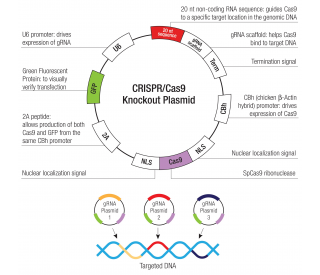Species Reactivity
Human
Specificity
Detects human Aldo‑keto Reductase 1C1/AKR1C1 in ELISAs and Western blots. In direct ELISAs, less than 5% cross-reactivity with recombinant human (rh) Aldo-keto Reductase 1C3 and 1C4 is observed.
Source
Monoclonal Mouse IgG 1 Clone # 859026
Purification
Protein A or G purified from hybridoma culture supernatant
Immunogen
E. coli-derived recombinant human Aldo‑keto Reductase 1C1/AKR1C1
Met1-Tyr323
Accession # Q04828Formulation
Lyophilized from a 0.2 μm filtered solution in PBS with Trehalose. *Small pack size (SP) is supplied as a 0.2 µm filtered solution in PBS.
Label
Unconjugated
Applications
Recommended
ConcentrationSample
Western Blot
0.1 µg/mL
See below
Simple Western
1 µg/mL
See below
Please Note: Optimal dilutions should be determined by each laboratory for each application. are available in the Technical Information section on our website.
Data Examples
Western Blot | Detection of Human Aldo‑keto Reductase 1C1/AKR1C1 by Western Blot. Western blot shows lysates of HepG2 human hepatocellular carcinoma cell line and human liver tissue. PVDF membrane was probed with 0.1 µg/mL of Mouse Anti-Human Aldo‑keto Reductase 1C1/AKR1C1 Monoclonal Antibody (Catalog # MAB6529) followed by HRP-conjugated Anti-Mouse IgG Secondary Antibody (Catalog # ). A specific band was detected for Aldo‑keto Reductase 1C1/AKR1C1 at approximately 37 kDa (as indicated). This experiment was conducted under reducing conditions and using . |
Simple Western | Detection of Human Aldo‑keto Reductase 1C1/AKR1C1 by Simple WesternTM. Simple Western lane view shows lysates of HepG2 human hepatocellular carcinoma cell line and human liver tissue, loaded at 0.5 mg/mL. A specific band was detected for Aldo‑keto Reductase 1C1/AKR1C1 at approximately 41 kDa (as indicated) using 1 µg/mL of Mouse Anti-Human Aldo‑keto Reductase 1C1/AKR1C1 Monoclonal Antibody (Catalog # MAB6529). This experiment was conducted under reducing conditions and using the 12-230 kDa separation system. |
Preparation and Storage
Reconstitution
Sterile PBS to a final concentration of 0.5 mg/mL.
Shipping
The product is shipped at ambient temperature. Upon receipt, store it immediately at the temperature recommended below. *Small pack size (SP) is shipped with polar packs. Upon receipt, store it immediately at -20 to -70 °C
Stability & Storage
Use a manual defrost freezer and avoid repeated freeze-thaw cycles.
12 months from date of receipt, -20 to -70 °C as supplied.
1 month, 2 to 8 °C under sterile conditions after reconstitution.
6 months, -20 to -70 °C under sterile conditions after reconstitution.
Background: Aldo-keto Reductase 1C1/AKR1C1
AKR1C1 (20-alpha -hydroxysteroid dehydrogenase, 20‑ alpha ‑HSD) is a member of aldo-keto reductase (AKR) superfamily. AKRs perform the NAD(P)H-dependent reduction of carbonyl groups (1). Four AKR1C isoforms (AKR1C1-C4) are known to exist in humans. They are all highly expressed in the liver. Three isoforms, excluding AKR1C4, have a wider expression pattern including prostate, testes, uterus, mammary gland, and haemopoietic progenitors (2). These enzymes are able to accept various natural steroids as substrates, including 3-, 7-, and 20‑ketosteroids (3). They can also activate prodrugs such as synthetic steroid hormone tibolone by converting it into active 3 alpha / beta -hydroxy form (4). They are recognized as phase I drug-metabolizing enzymes involved in the maintenance of steroid homeostasis, prostaglandin metabolism, and metabolic activation of polycyclic aromatic hydrocarbons (5). Their reactions introduce a hydroxyl group into the product making it available for sulfonation and glucuronidation by phase II enzyme. Elevated expression of these enzymes is related to cancer with hormone-dependent malignancies (6, 7). Increased levels of expression of AKR1C1 parallels increased cell proliferation activity in human colon cancer cells. It has been shown to be associated with oncogenic potential and proproliferative effects. It is also involved in cancer cell chemoresistance.
References:
Jez, J.M. et al. (1997) Biochem J. 326:499.
Penning, T.M. et al. (2000) Biochem. J. 351:67.
Rizner, T.L. et al. (2003) Endocrinology. 144:2922.
Steckelbroeck, S. et al. (2006) J. Pharmacol. Exp. Ther. 316:1300.
Penning, T.M. et al. (2004) Mol. Cell. Endocrinol. 1784:1342.
Penning, T.M. and M.C. Byrns (2009) Ann. N. Y. Acad. Sci. 1155:33.
Baumann, D.R. et al. (2004) Drug News Perspect. 17:563.
Long Name:
Aldo-keto Reductase Family 1, Member C1
Entrez Gene IDs:
1645 (Human)
Alternate Names:
20 alpha-hydroxysteroid dehydrogenase; 20-ALPHA-HSD; 20-alpha-hydroxysteroid dehydrogenase; 2-ALPHA-HSD; AKR1C1; Aldo-keto Reductase 1C1; aldo-keto reductase family 1 member C1; aldo-keto reductase family 1, member C1 (dihydrodiol dehydrogenase 1; 20-alpha(3-alpha)-hydroxysteroid dehydrogenase); AldoketoReductase 1C1; C9; Chlordecone reductase homolog HAKRC; DD1/DD2; DD1MGC8954; DDH1; DDHH-37; dihydrodiol dehydrogenase 1; Dihydrodiol dehydrogenase 1/2; dihydrodiol dehydrogenase isoform DD1; EC 1.1.1; EC 1.1.1.-; EC 1.1.1.112; EC 1.1.1.149,2-ALPHA-HSD; EC 1.3.1.20; HAKRC; HAKRCDDH1aldo-keto reductase C; HBAB; hepatic dihydrodiol dehydrogenase; High-affinity hepatic bile acid-binding protein; Indanol dehydrogenase; MBAB; Trans-1,2-dihydrobenzene-1,2-diol dehydrogenase; type II 3-alpha-hydroxysteroid dehydrogenase










